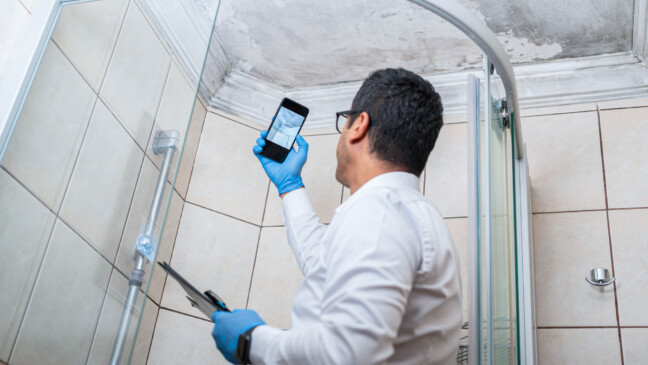
30.03.23
Tools in industrial cleaning – the cleaning trolley
As in any trade, the right tools play a crucial role in commercial cleaning. Different cleaning trolleys can make work more efficient and provide good ergonomics for fatigue-free work. The key here is to find the right type of trolley for each application.
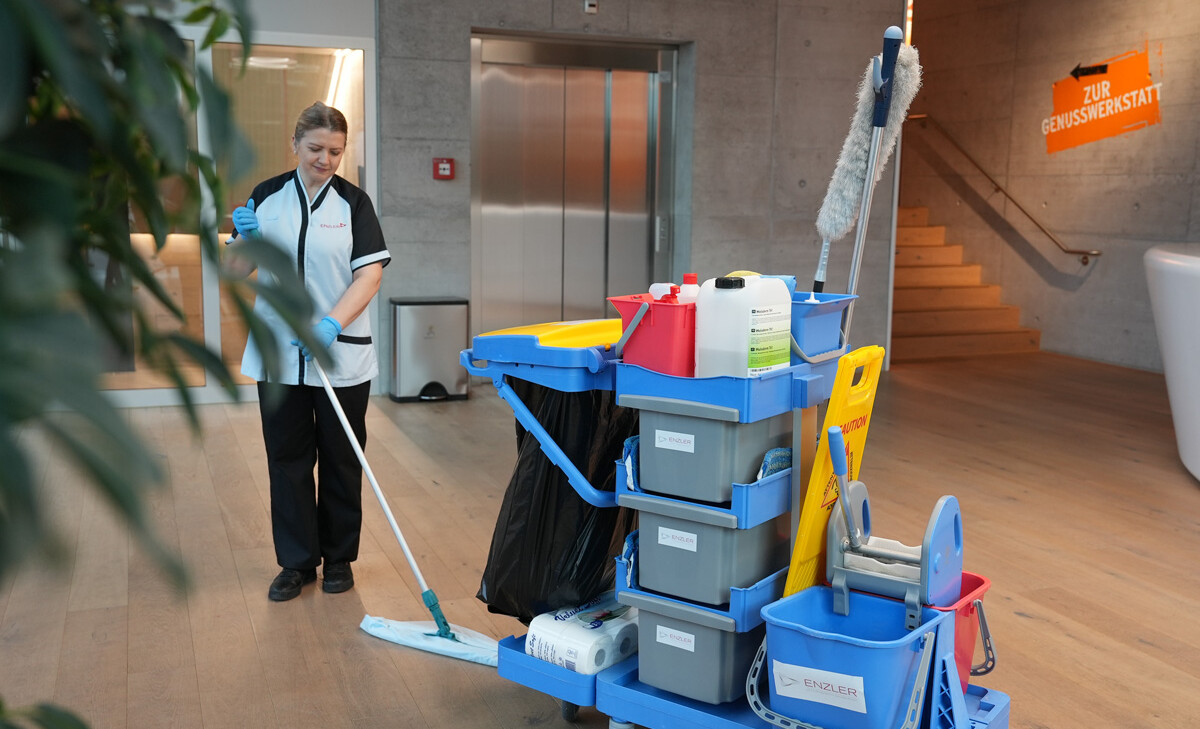
Since 1993, our customers have also found a wide range of cleaning equipment in our assortment. Professional cleaning equipment is essential in commercial cleaning. They support the cleaning staff in their daily work by providing more efficiency, ergonomics and safety. The image of the cleaner with a bucket and washcloth no longer has much in common with modern commercial cleaning. In order to meet the hygiene requirements in the various industries, the cleaning materials must be adapted to the respective needs. The cleaning trolley plays a central role.
Bucket trolley
In its simplest form, it consists of one or two buckets with a press for the cleaning textiles. For an optimal cleaning result, the variant with two buckets should be preferred whenever possible. There are bucket trolleys that have the rollers integrated directly into the plastic body, or those with a separate chassis made of plastic or metal. The variant with a separate chassis allows a small tray to be attached for carrying additional cleaning utensils, such as microfiber cloths and a spray for surface cleaning. Even a small waste unit can be integrated – but usually at the expense of the second bucket. However, a bucket trolley can also be equipped with mop boxes for pre-moistened cleaning textiles only. This includes the boxes with the pre-moistened textiles and boxes or laundry bags for the soiled textiles.
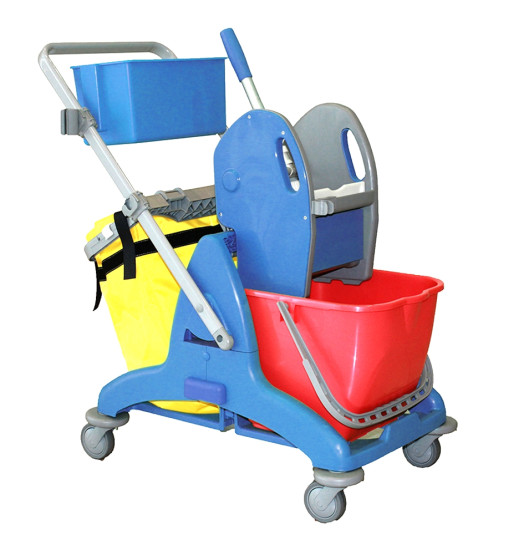
Service and combination trolley
Much more complex in its construction is the service or combination trolley. These cleaning trolleys fulfill important functions in maintenance cleaning. As a mobile cleaning station, they accompany the cleaner around the facility. This eliminates unnecessary journeys, as all the necessary cleaning utensils are carried along. The cleaning trolley must meet various requirements. That is why cleaning carts today are modular in design. Modularity means that the trolley can be tailored to the specific needs at the property, or a trolley can be specified in a generally uniform way to optimize the training of cleaning staff. Until recently, cleaning carts with a metal frame, either coated, chrome-plated or chrome steel, were the standard. These had two to three levels of plastic trays or metal baskets plus a waste unit and press unit on the combination cart. These trolleys were open and the contents were visible. Today, plastic is mainly used in the construction of cleaning carts. More and more often recycled plastic is chosen for the production. However, these trolleys are usually available only in very dark color. In addition to open variants with trays, you can increasingly find closed variants with drawers or completely closed carts with doors. Even the buckets, which are usually positioned prominently on the top tray, can be made invisible in this way.
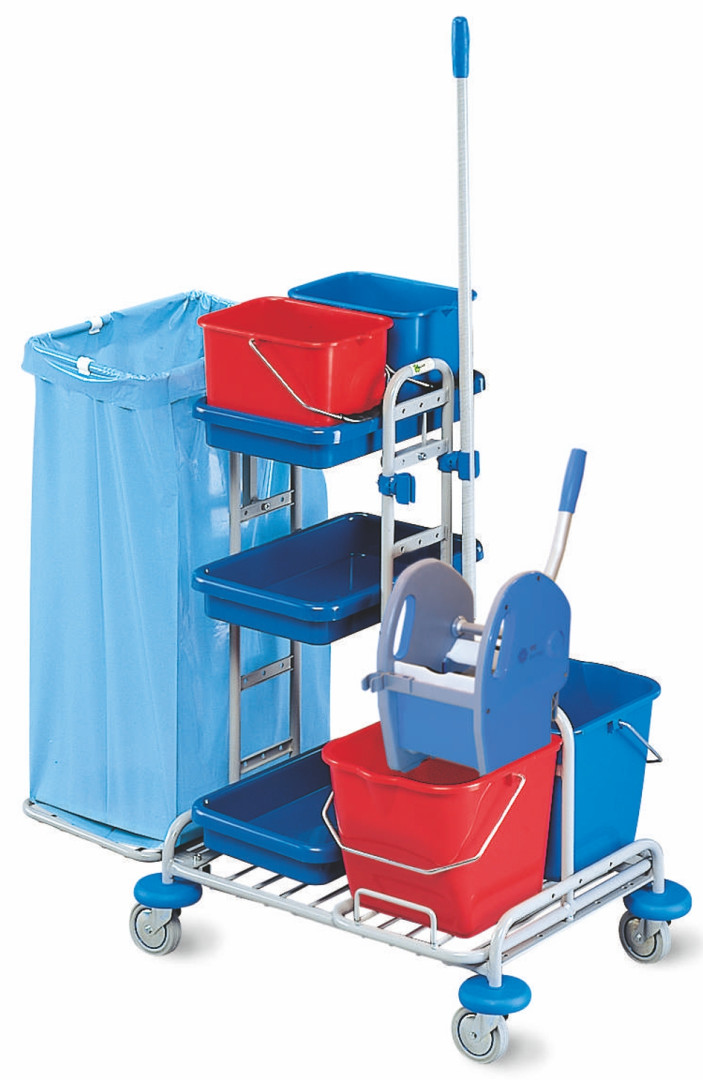
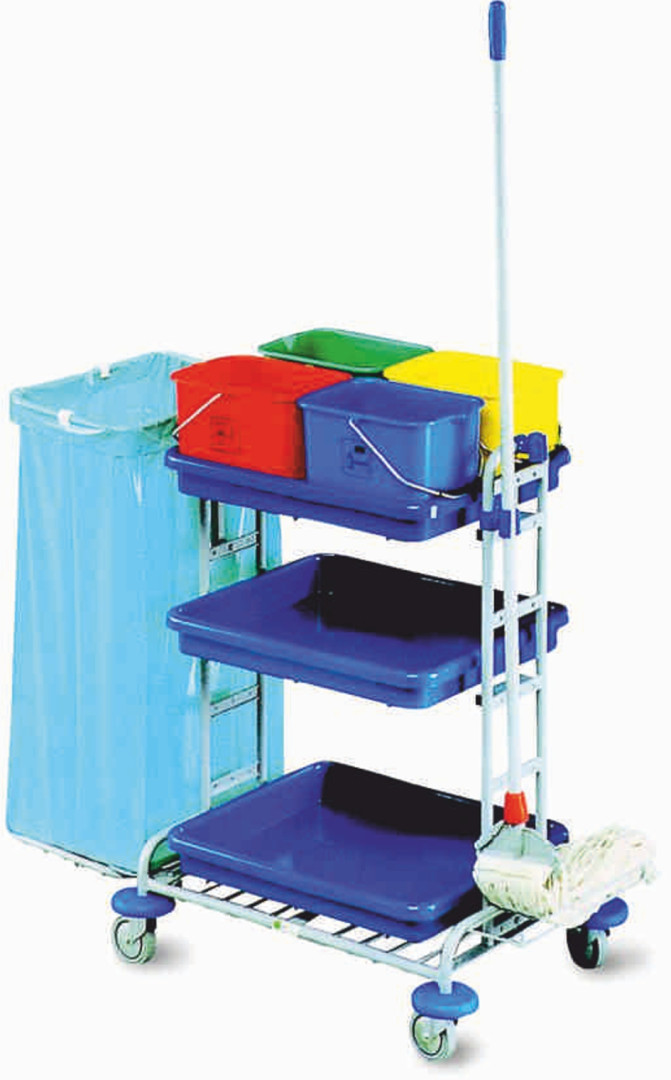
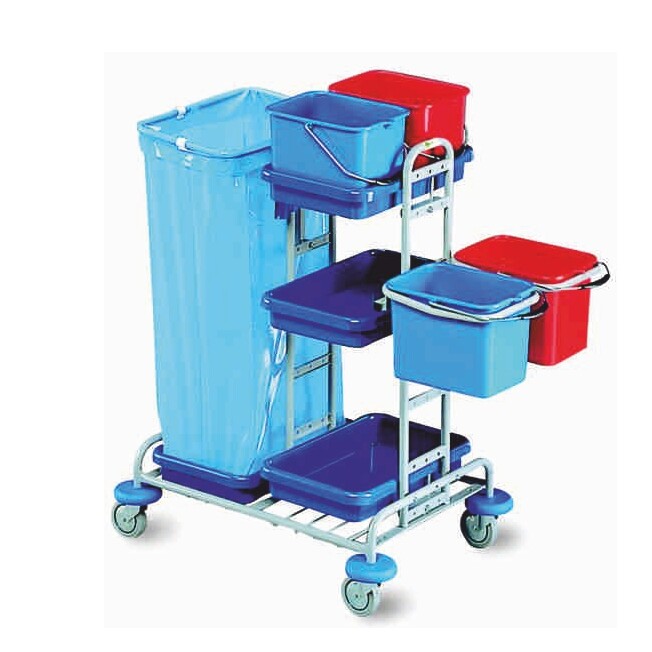
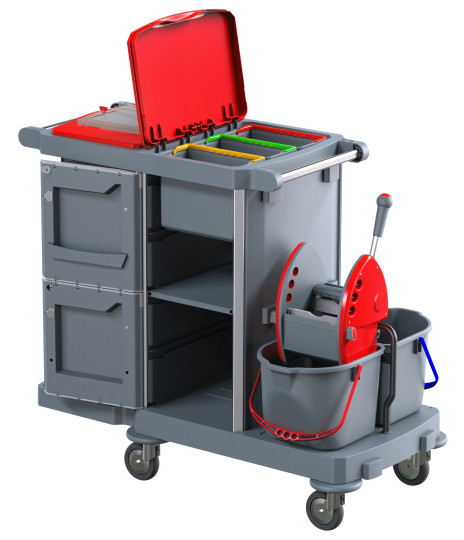
Whether modern or old, the trolley must fulfill its purpose. This means it must provide sufficient space for all the necessary utensils, including cleaning agents and textiles, equipment for dusting and wet wiping, and increasingly, vacuum cleaners that are to be carried along. The trolley also serves as a supply cart, requiring space to carry enough cartridges for hand soap and toilet paper. This eliminates the need for cleaning staff to make additional trips to the supply room, positively influencing efficiency.
The trolley also requires a waste unit, usually one 110 liters or two 60 liters, to separate waste or create space for dirty cleaning textiles. Additional mounting points are needed for warning signs and shelves for equipment.
The combination trolley can be equipped with a conventional pressing system. Increasingly, mop boxes for pre-moistened cleaning textiles are also used in this context. If the proportion of wet surfaces to be cleaned is relatively low, a service cart equipped with a spray mop device can take over the functions of a combination trolley.
Waste Trolley
Also worth mentioning is the waste cart. The well-known classic X-cart made of metal, equipped with a 110-liter waste bag, is still in use today. However, variations based on service carts are also possible. Configurations with up to 4 x 110-liter waste bags are possible. For sensitive areas, closed variants are also available. The modular design allows for the inclusion of some cleaning utensils as well.
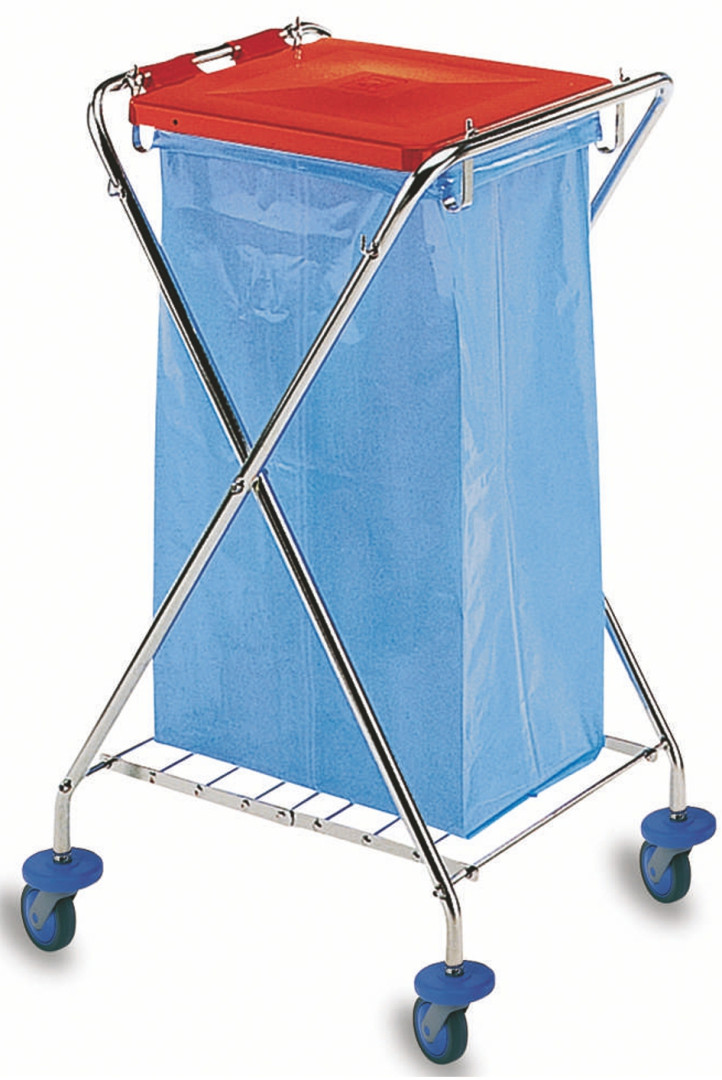
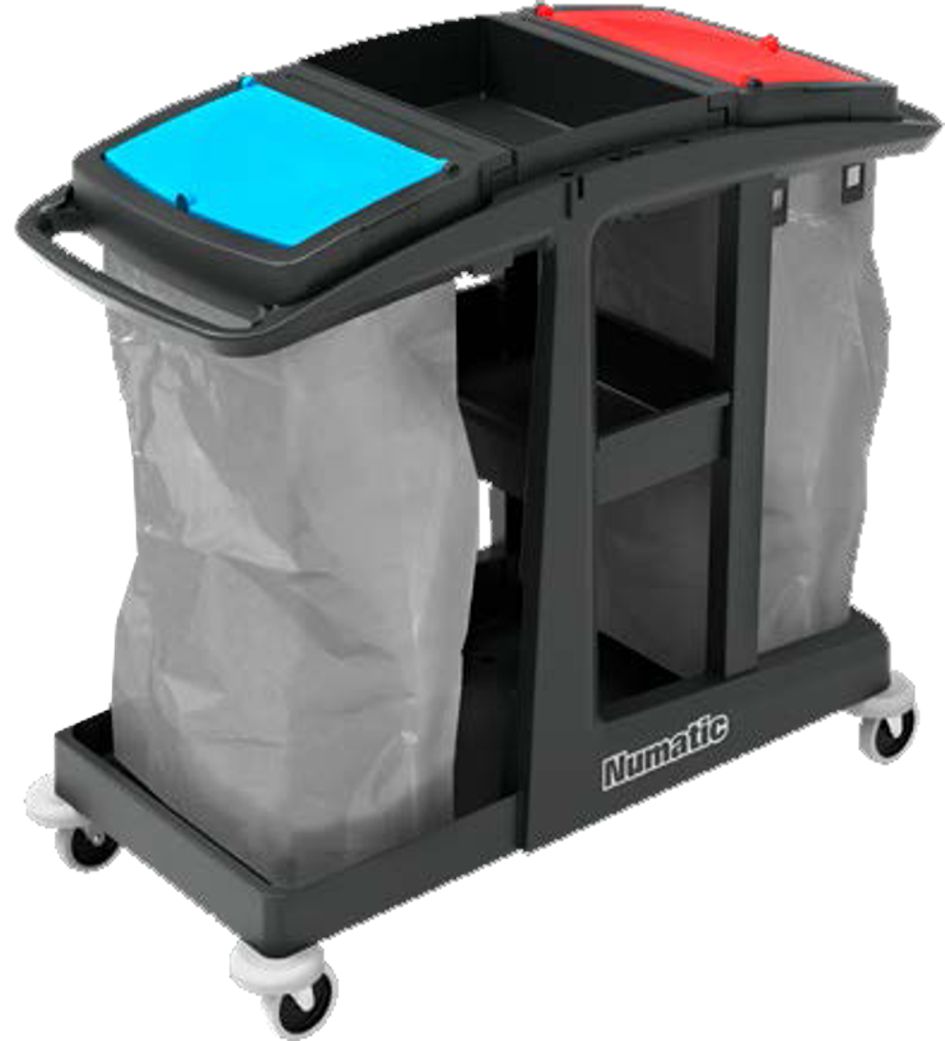
Sources
All information is provided by the author, and images are sourced from the database of Flühler Reinigungsprodukte AG.

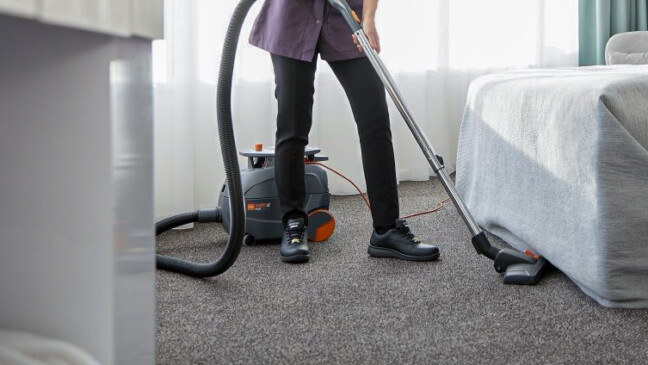
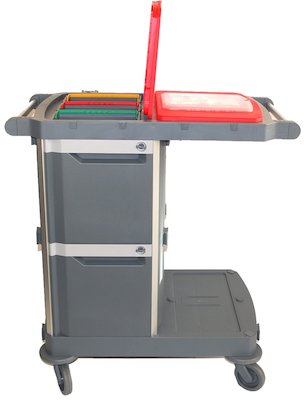
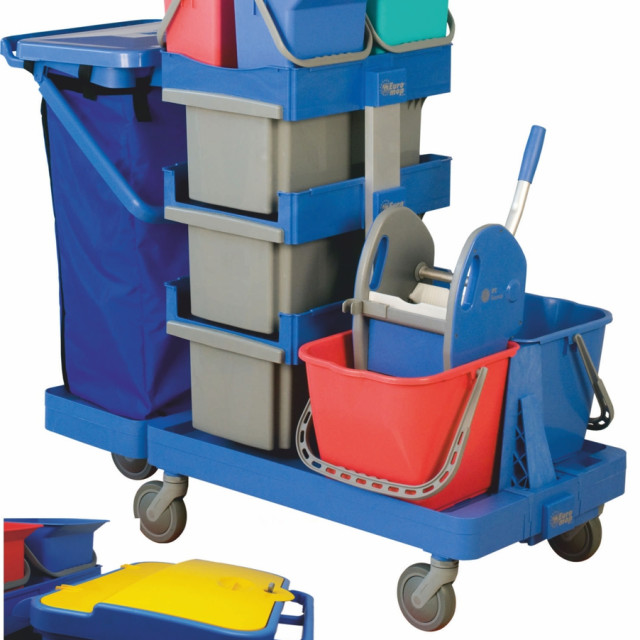
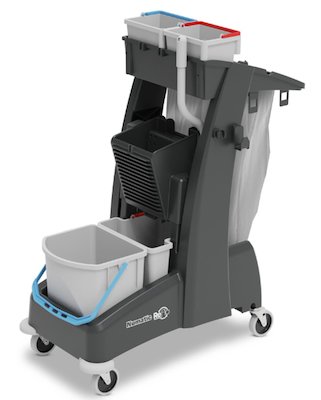
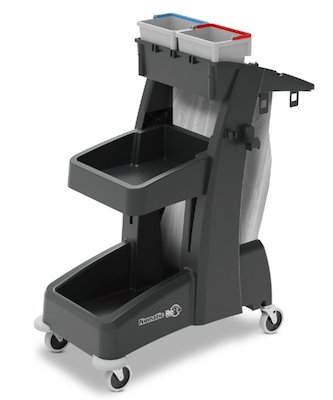
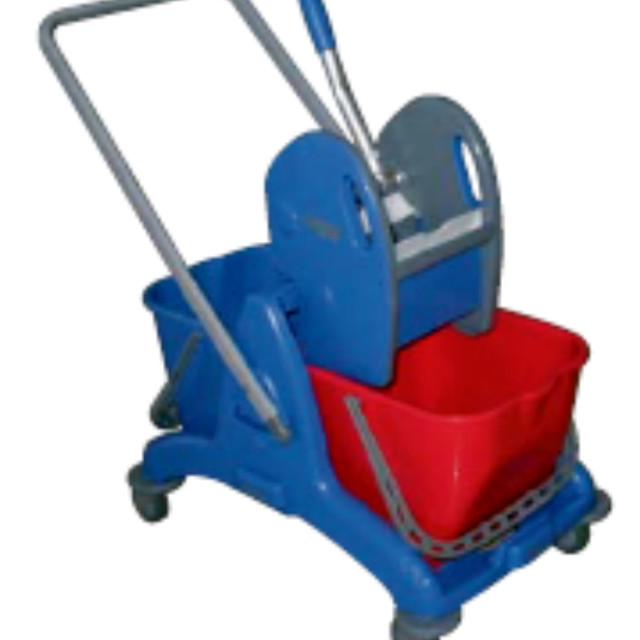
![Spinnwebenwischer Oval 1[1]](https://www.hygieneforum.ch/wp-content/uploads/spinnwebenwischer-oval-11.jpg)
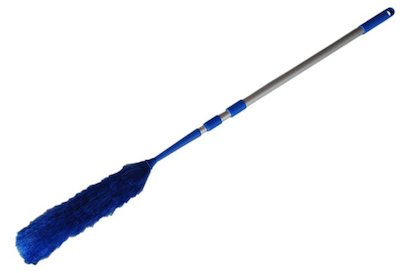
Tell us what you think
Be the first to comment this post.
You must be logged in to leave a comment.